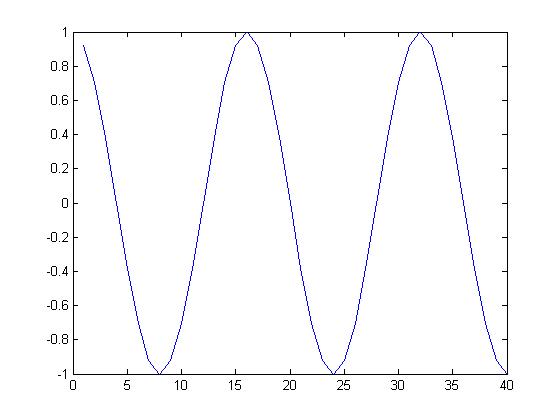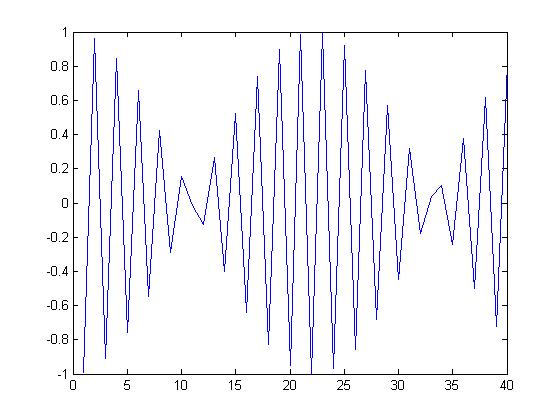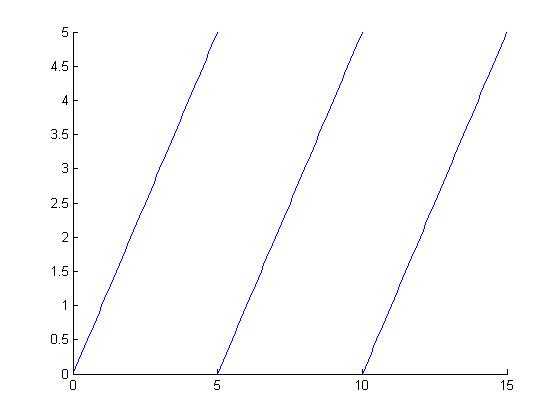(New page: == A CT periodic signal sampled at different frequencies == It is known that y=cos(x) in CT is a periodic function, and this periodic CT function was sampled at different frequencies in ...) |
(→A CT periodic signal sampled at different frequencies) |
||
| (2 intermediate revisions by the same user not shown) | |||
| Line 5: | Line 5: | ||
<pre> | <pre> | ||
| − | |||
| − | |||
%%%%%%%%DT input%%%%%%%%% | %%%%%%%%DT input%%%%%%%%% | ||
| + | n=1:1:40 | ||
| + | |||
y=cos(pi/8*n); | y=cos(pi/8*n); | ||
| Line 19: | Line 19: | ||
</pre> | </pre> | ||
| + | [[Image:periodicss_ECE301Fall2008mboutin.jpg]] | ||
| + | FIGURE(1) | ||
| + | shows a periodic DT graph | ||
| + | |||
| + | [[Image:Aperiodic_ECE301Fall2008mboutin.jpg]] | ||
| + | FIGURE(2) | ||
| + | not a periodic graph | ||
| + | |||
| + | |||
| + | |||
| + | == Making periodic signal by shifting and summing aperiodic signals == | ||
| + | I used y=t signal to shift and make periodic signal. | ||
| + | <pre> | ||
| + | t=[0:0.1:5] | ||
| + | t1=[5:0.1:10] | ||
| + | t2=[10:0.1:15] | ||
| + | y=t | ||
| + | hold on | ||
| + | plot(t,y) | ||
| + | y1=(t) | ||
| + | plot(t1,y1) | ||
| + | y2=(t) | ||
| + | plot(t2,y2) | ||
| + | hold off | ||
| + | </pre> | ||
| + | [[Image:Part2_ECE301Fall2008mboutin.jpg]] | ||
Latest revision as of 14:32, 12 September 2008
A CT periodic signal sampled at different frequencies
It is known that y=cos(x) in CT is a periodic function, and this periodic CT function was sampled at different frequencies in DT.
%%%%%%%%DT input%%%%%%%%% n=1:1:40 y=cos(pi/8*n); figure(1) plot(n,y) y2=cos(3*n); figure(2) plot(n,y2)
 FIGURE(1)
shows a periodic DT graph
FIGURE(1)
shows a periodic DT graph
 FIGURE(2)
not a periodic graph
FIGURE(2)
not a periodic graph
Making periodic signal by shifting and summing aperiodic signals
I used y=t signal to shift and make periodic signal.
t=[0:0.1:5] t1=[5:0.1:10] t2=[10:0.1:15] y=t hold on plot(t,y) y1=(t) plot(t1,y1) y2=(t) plot(t2,y2) hold off


